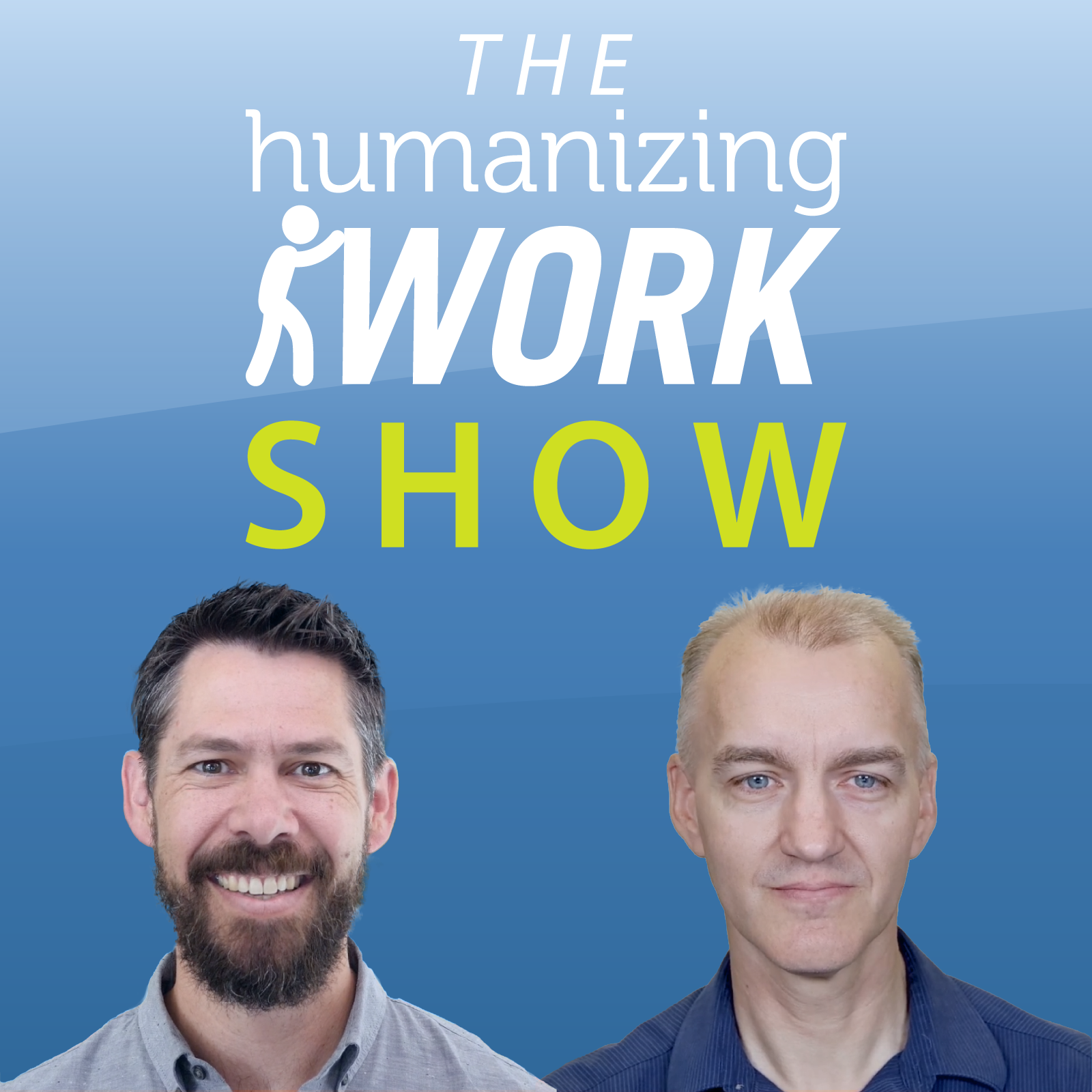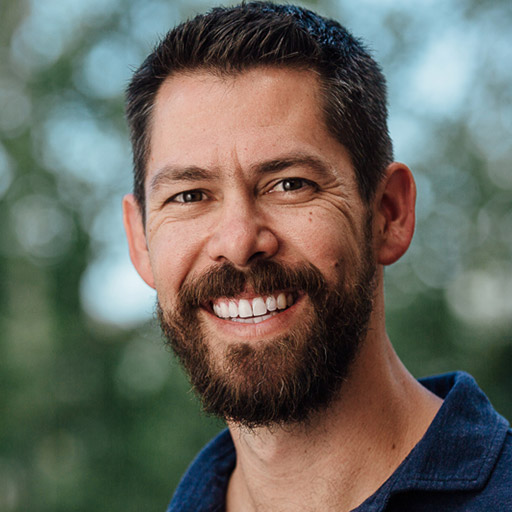Episode Transcript
Welcome to the Humanizing Work Show. In this episode, I'm going to share a pattern called 3ID that we've discovered for making good decisions during uncertain times. As we've used and talked about the 3ID pattern with our community and our clients. We've also discovered that it makes for a fantastic template for how to communicate about decisions that have already been made.
Before we jump into the episode, just a quick reminder to rate and review the humanizing work show in your podcast app. Or if you're watching on YouTube, please subscribe like and share the episode if you find it useful to you. We appreciate your support. The inspiration for this pattern came from a story we read about, the story is about a company called FAVI
Now FAVI is a manufacturing company. They make brass parts primarily for the automotive industry. During 2008, the last big recession that we went through, their sales were impacted like many companies in the world. And as their revenue started to drop, they became increasingly concerned that they weren't going to be able to make their payroll. The executive director of FAVI, a gentleman named Jean-Francois Zobrist, was concerned and wasn't sure what to do about that.
Now, of course, they could lay people off, but that would be a challenge for FAVI, because when Zobrist took over as the leader of that company, he brought in a completely different mindset. Prior to Zobrist’s tenure there, FAVI had been a pretty traditional blue collar manufacturing company. They had about three or four hundred employees at the time. There were six levels of hierarchy there, so pretty long reporting structures, things like that.
When Zobrist took over, he really firmly believed that they weren't treating their employees like adults, like they were trustable people. And so when he took over, he decided that he was going to change the culture of FAVI to a culture where people treated each other like they trusted them, like they respected them. He did a lot of cool things as part of that process.
One of the very first actions he took after becoming the executive director of FAVI was to brick up a window. Now, this might seem like a small thing, but the window that he bricked up was on the second floor. And the way that the factory was laid out is that the factory floor was on the first floor and then up on the second floor.
There were offices where the managers, the line managers, the supervisors would oversee the factory floor. He wanted to send a strong signal, what we refer to as a culture signal about the tradeoffs we're willing to make to communicate that we actually trust you. And so one of those first actions was that window where the supervisors could overlook their workers.
He bricked it up so that they could no longer overlook it. Now, we love this as a culture signal because it makes a trade off clear that we're willing to get worse at visibility in order to communicate trust. So quick side note about culture signals is that they're actions that a leader might take to communicate the cultural values that they want to emphasize, and most importantly, the trade offs that they're willing to make in order to emphasize those values.
So after a series of these things like removing the time cards, they were facing this challenge. So Zobrist didn't know exactly what to do because he didn't want to lay people off. He thought that that would decrease the level of trust. And so what he did was call a company all hands meeting. He got all the shifts in at the same time during the overlap of the shifts and went down to the factory floor and just explained what was going on, that the revenue was dropping, that we had hired several new people over the last year.
And in France, the way the labor laws work is once you've worked at a company for a certain amount of time, it's like a professor that has tenure in the United States. Very difficult to fire ‘em, can't really just lay ’em off due to economic conditions. And so what Zobrist knew and everybody else at the company knew is that if they had to lay people off, that meant they were going to lay off their newest workers, the people that had only been working there for less than a year.
So he communicated this. He said, here is the revenue picture. Here's what that means as we look at the forecasts for how revenue is going to decrease over the next several months. And I don't know what to do about it, but I don't want to lay people off because we value all of you. We really do want to live up to our mission.
And their mission at the time was to provide meaningful employment in their rural community. This was in southern France. And he said, I don't know what to do. What ideas do you have? And turned it over to the company. Pretty bold move to express that level of vulnerability and uncertainty by a leader like this. But he had built enough trust that he felt confident that he could do that without causing pandemonium to result.
And so as he waited for people to answer his question, finally, a very senior employee towards the back of the factory stood up and said, You know, I really value our newest team members and I don't want them to get laid off either. I would be willing personally to take some unpaid time off and then devote the salary that I would have received towards helping the people on my team not be laid off.
And I think that if I did that and maybe one or two other people on our team that have some seniority would be willing to do that. We could cover the deficit that we're looking at here. And there was some discussion that went on. And the way that Fabio was organized in what they called mini factories with about 20 people in each mini factory, each mini factory having a specific customer that they work for.
And so different mini factories huddled together and they started doing a little bit of math. And they asked, you know, is there anybody that also has the capability to do what our friend suggested over there? And pretty quickly, they realized that there were enough people that were willing to take that time off, everybody that was able to financially do that, that they would not have to lay anybody off.
And so by the end of that hour, all hands, they had decided, here's the approach we're going to take. So this specific example was really inspiring to me. And as I started to think about it, I realized that there is this pattern that we've seen with other really effective leaders, this 3ID pattern. So let me explain the pattern there.
The 3I means there are three I’s followed by the D. The D is the decision. So the first I is when we're trying to make a decision like this. We start with the context, what we're going to call information, what information is available, why are we making a decision here? For FAVI that was here's the revenue picture.
Not only globally, not only in our industry and with our customers, but also here is the revenue picture for our company. We're going to have a deficit here. We don't have enough to pay everybody at our current rates. That's the context. And so the rest share that information. That's the first I, Information. The second I is inspiration. Inspiration is what principles will use to make a good decision for us here.
Now for FAVI, again, this was the inspiration of we want to treat each other like we trust each other and we want to fulfill our mission to provide meaningful employment in our rural community here. How can we address the challenge presented in that information while staying true to our principles for what good decisions are in our context? So that's the second I inspiration.
We’ve got information, inspiration. The third I then is an invitation. And the invitation asks the question, how do we bring as many perspectives to bear on this situation as possible? When we're looking at how we extend the invitation, we're going to consider things like who might have good insight or ideas, who might be impacted by the decision?
How could we involve them in co-creating a good outcome here? Now, a little bit about invitation, because in a company the size of FAVI, Zobrist was able to extend the invitation to the entire company while still making a timely decision. That might not be the case at scale. And so sometimes we can't effectively extend the invitation as broad as we would like to if there is high urgency in making a decision here, which we'll talk about in a moment.
So given our time constraints for making a good decision, how do we extend that as broadly as possible? So that's the third I, invitation. So we've got information, inspiration, invitation. And then finally the decision, what will we do? This seems pretty straightforward. We actually reach a decision. But one thing that I would add here is that in a conversation like this where we're trying to make a decision, we'd recommend that you share how a decision will be made ahead of time.
So is this a situation where there is a leader who will make the final decision, but this leader wants to invite as many perspectives as possible prior to them making the decision. So that would be one possible way to make a decision. So decide how you will decide. Now, the decision might not take that process. It might be there might be a group that will make a decision in some way.
It might be we're not going to make a decision unless we get to complete consensus on this. There are different pros and cons to all these different decision making models. But clarifying that upfront is super valuable. So explain how you will make a decision given the context. So let me share a recent example of how we use this at our company.
Over the last year or so, the humanizing work company has been considering developing a new offering for line and middle managers, which is a new target market for us. So if we were to walk this through the 3ID approach, I'll describe how we used these four parts, the 3ID, so information we first considered what we would need to trade off if we were to focus here.
We're a small company. We don't like anyone else, have unlimited resources. And so a decision to do a new thing means a decision to reduce our focus in other areas. Not only that, there's an opportunity cost. If we focus on this area of management, that means we can't pursue this other opportunity. So we first talked about what we would need to trade off in order to focus.
The second thing we looked at is what is the potential market size and do we have good channels into that market or will we need to develop them? And then the third bit of information is a little bit of competitive analysis. Who's already playing in that space and what are they offering? So this was the information that we started playing with to look at should we move out into this new market?
Inspiration The key thing for us when we were making this decision is the question that if we focus on management, does it contribute to our mission of helping organizations thrive? Does it have a major leverage point in making work more fit for humans and humans more capable of doing great work? Again, with opportunity cost tradeoffs there. The second thing we considered is an internal principle, which is can we do this without spreading ourselves too thin, without burning ourselves out?
And then the third thing we thought about was, from a principle standpoint, can we use this as an opportunity to improve other business systems, to improve our approach to marketing and sales and delivery of products and services? So those were all principles that we wanted to play. We want to improve the system as we do new things. We don't want to burn ourselves out and we want to have as much impact as possible.
So those were the three principles. The invitation was relatively easy for us. Again, we have a fairly small company, but everybody in the company was invited to contribute to examine the decision and examine the information available and contribute to what we do next. But we did open the discussion a little bit more broadly than that. We talked about it with some trusted clients, some partners, as well as the humanizing work community to get more input on that.
So even if you're a small team, a small company, think about how you might extend the invitation more broadly to get more perspectives on what you're considering doing. What we decided to do was actually do customer interviews, something that we often coach and teach about. But let's do good customer research through interviewing people that we believe to be in our target market and asking them what we call situational questions.
And that taught us a lot about how that market behaves and what they value their jobs to be done, their pains and gains. And we also did some competitive analysis, looked at other people that were playing in this space and what they were offering and how that might either help or compete directly with us. We decided to offer small, inexpensive workshops to test the resonance of our approach to management and the effectiveness of that solution as we taught it.
And then we started testing the offering by proposing it on calls with potential clients. So those were all decisions that we made as a result of following this 3ID pattern. Now, at the beginning of the episode, I mentioned that not only have we found this to be a really effective pattern for how to make a good decision, but we have found it to be a really effective way to communicate about decisions that have already been made.
So an example at the start of the pandemic, almost every business had to make really big decisions, often in the time span of a few hours, maybe a few days. Think of grocery stores. Think of delivery services, restaurants. There were huge segments of the business world that had to change as a result of the pandemic. And even if they didn't use the pattern to make the decision or to extend the invitation as widely as they might have liked.
We discovered that using this 3ID pattern can be a really valuable way to communicate the result of a decision. So as you're using this to communicate a couple of points on each of the four parts of this, when you're communicating information, make sure that you clarify the context that caused us to make a decision that we have the curse of knowledge.
Once we've dove into an idea, a decision, and we start to forget that we didn't know those things when we started to consider it. So it's really important to get really clear yourself on how you communicate. Why did we need to make the decision? What information did we consider? What were we aware of? Right? So that may feel like repetitiveness, but for somebody that you're communicating to, it will be new information and useful information.
On the second I inspiration, you need to describe the principles that you used to guide the decision. And remember, these are principles that should inspire. We wanted to make a good decision. So I think of the grocery store example. During the pandemic, we wanted to make a decision that focused on the safety of our employees while still providing the basics to our community.
How do we make a good decision there to balance those two things? So if those are principles, that's what we need to communicate about. Start with that inspiration. Once you've communicated the context, then even if you weren't able to extend the invitation as broadly as you would like, I think it's important to share who was involved in contributing to the decision and why.
Then going back to the grocery store, example, if you had to make a decision overnight about what you're going to do when communities went into lockdown, who did you involve and why them? And specifically, why didn't you have time to go broader if you didn't or if you did but chose not to, why not? Then finally communicate about the decision.
What was the decision? And in the communication version of this, I think it's most important to focus on the role that your listeners need to play as a result of this decision. What does it mean for me? So the first job of management is creating clarity and using the 3ID pattern helps create clarity about decisions while we're making them as well as while we're communicating about them.
We hope you'll give it a try. Thanks for checking out this episode. Feel free to reach out to me on Twitter, on LinkedIn or email Peter at humanizing work dot com. If you have any questions about this approach or if you're starting to try it and you get stuck on any of these parts, shoot me an email. Reach out to me on Twitter.
I'm happy to respond. Thanks for listening today. And we hope you find the three eyed pattern for decision making helpful to you.




